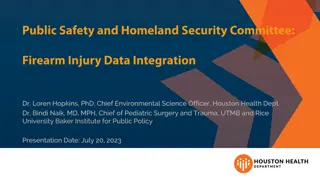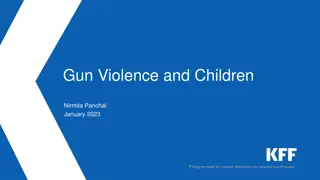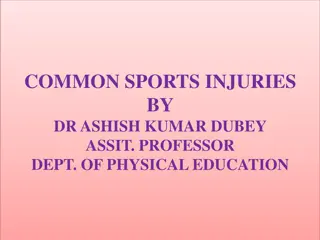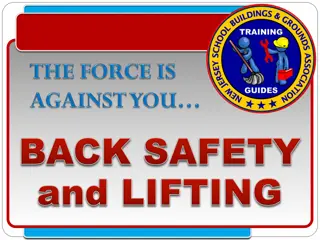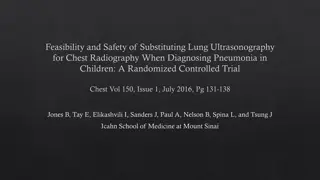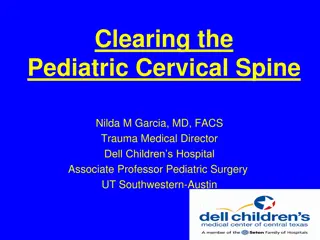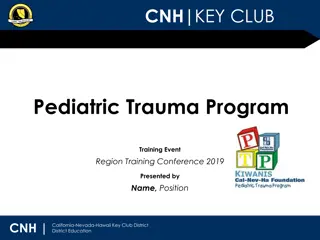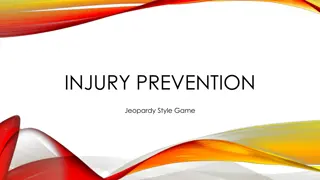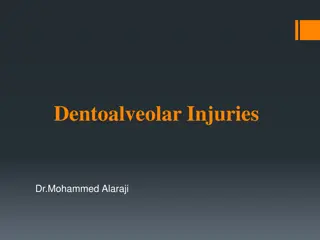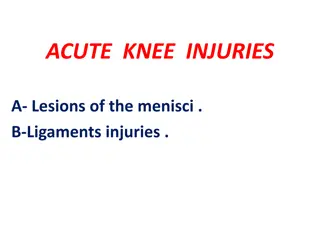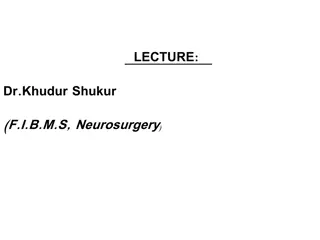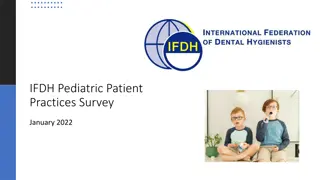Understanding Pediatric Firearm Injuries and Future Research Directions
Pediatric firearm injuries are a significant public health concern, with thousands of American children affected annually. Research gaps exist in understanding the causes, consequences, and prevention strategies for pediatric firearm injuries. The lack of surveillance data and research funding hinders progress in this field. Initiatives like FACTS aim to bridge these gaps by developing a research agenda, training researchers, and creating resources to inform prevention efforts and reduce child and adolescent firearm injuries. Scoping reviews are underway to inform primary and secondary prevention strategies, policy development, and legal considerations.
Download Presentation

Please find below an Image/Link to download the presentation.
The content on the website is provided AS IS for your information and personal use only. It may not be sold, licensed, or shared on other websites without obtaining consent from the author. Download presentation by click this link. If you encounter any issues during the download, it is possible that the publisher has removed the file from their server.
E N D
Presentation Transcript
Pediatric Firearm Injuries: What We Know and Directions for Future Research JESENIA M. PIZARRO, PH.D ASU SCHOOL OF CRIMINOLOGY AND CRIMINAL JUSTICE
Causes of Death for Children and Teens (0 -19 years) Cunningham et al., 2018
Death Trends Cunningham et al., 2018
Overall Firearm Injuries Approximately 120,000 American injured by firearm in 2016 (36,000 fatally, and 90,000 non-fatally. 49.8% of suicides committed with firearm. 71.5% of homicides, 40.8% of robberies, and 24.2% of aggravated assaults committed with firearm. CDC, 2017; FBI, 2016
Lag in Research & Funding Currently, we have a substantial deficit of established and developing researchers, surveillance data on the causes and consequences of pediatric firearm injury, and pilot data to support and test innovative and tailored prevention strategies. Dickey Amendment of 1996
Goals of FACTS The goal of FACTS is to inform cross-disciplinary evidence based research by developing a research agenda for pediatric firearm research, and build capacity. Developing research resources to inform the prevention of pediatric firearm injury and death including: 1) training a cadre of postdoctoral trainees and graduate and undergraduate students to increase the pipeline of firearm researchers; 2) creating conferences, webinar series, and other resources to educate researchers and policy makers about firearm injury science; 3) creating an accessible data archive on pediatric firearm injury; and 4) funding projects to generate preliminary data that inform future research to decrease the toll of child and adolescent injury and death from firearms.
STEP 1: Creating a Research Agenda 5 Scoping Reviews of the existing literatures Surveillance & Epidemiology Risk & Protective Factors Primary Prevention Secondary Prevention & Long Term Health Policy & Law
Research Agenda Understand recent epidemiological trends and how demographic factors (race/ethnicity, sex, socioeconomic), development stages, and environmental differences (urban/rural, neighborhood effect, culture) relate to fatal and non-fatal firearm outcomes. How is the epidemiology of non-fatal firearm injuries similar or different from fatal firearm injuries. What explains underlying racial disparities observed across different types of firearm outcomes. What underlying factors beyond poverty differentiate different types of firearm injuries across regions of the U.S.. What is role and involvement of girls and rural/suburban children in firearm injury and firearm culture. Which risk and protective factors are most salient at which developmental period? How does developmental stage affect risk and protective factor exposure.
Research Agenda Continued Understand how children and adolescents acquire firearms and patterns of adolescent firearm carriage. What are the different subgroups of adolescents that carry firearms (e.g., episodic carriers vs. persistent firearm carriers) and what factors differentiate these subtypes. What factors contribute to initiating and discontinuing firearm carriage. How do children and adolescents acquire or gain access to firearms. What is the motivation for acquisition, ownership, and carriage in adolescence. How does firearms diversion from the legal market to the illegal market affect child and adolescent firearm outcomes. What is the concordance/discordance between parents and their children regarding knowledge of firearm access and prior firearm handling among children.
Research Agenda Continued Understand the incidence, patterns, and outcomes associated with defensive firearm use among children, adolescents, and their family members. How often, and in what circumstances, are children and adolescents actively protected by their own self-defensive firearm use or that of someone else (e.g., friend, parent, acquaintance). Understand the immediate and long-term costs associated with pediatric firearm outcomes. What are the immediate (e.g., healthcare costs) and long-term (e.g., criminal justice, disability, mental health, societal) costs? Understand protective factors for firearm outcomes and their underlying mechanisms across all individual and socio-ecological levels (community, school, family, peer). What are key protective factors across ecological levels for child and adolescent firearm outcomes (before and after a firearm injury), and how do those factors interact with effects of risk?
Research Agenda Continued Understand how the availability, storage, and presence/use of a firearm in the home and/or in schools affects child and adolescent firearm outcomes. How are firearms stored in households with children and adolescents. How many schools in the country have armed adults. Among households with children, how do the characteristics of those with firearms differ from those without a firearm. How do the characteristics of firearm-owning households with children which practice safe storage differ from those households not practicing safe storage. How do parents perceptions/attitudes toward firearm ownership and storage affect risk among children. How are storage decisions made in homes with children/ adolescents.
Research Agenda Continued Understand risk factors and their underlying mechanisms across ecological levels, especially those that extend beyond the individual level to include community, school, family, and peer factors. What are the risks across multiple ecological levels, with a focus on understudied family (including adverse childhood experiences (ACES) and Family intimate partner violence), school, and community-level factors. How does the socialization of children in the firearm culture (e.g., hunting, media) and/or exposure to firearm violence (e.g., neighborhood violence, violence in the home environment, media portrayals of violence) positively or negatively influence outcomes. What event, situational and contextual factors, including social network/contagion are associated with firearm outcomes.
Stage 2: Pilot Projects 9 projects were funded by FACTS: Examining restrictiveness/permissiveness on the State level outcomes k-12 of mass shootings Examining Risk and Protective Factors of Firearm Outcomes (National Survey, using Gallup) The Effect of Extreme Protective Order Laws in Oregon Agent Based Modeling and Firearm Violence in in Flint, MI Emergency Room Registries Social Media reactions to the next mass shooting Primary prevention, safe storage in the community, rural focus groups in the Upper Peninsula Implementation of safety check in health care setting Busy Streets: Environmental Design and Firearm Violence Prevention


